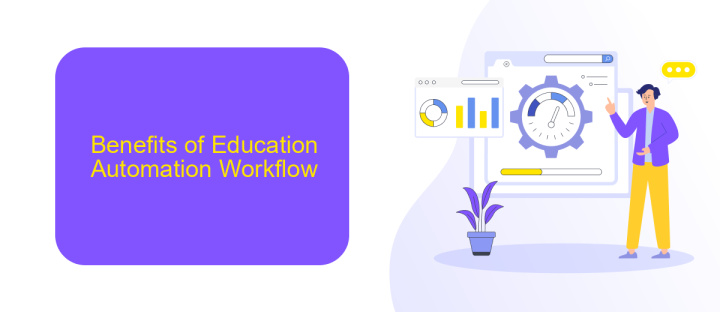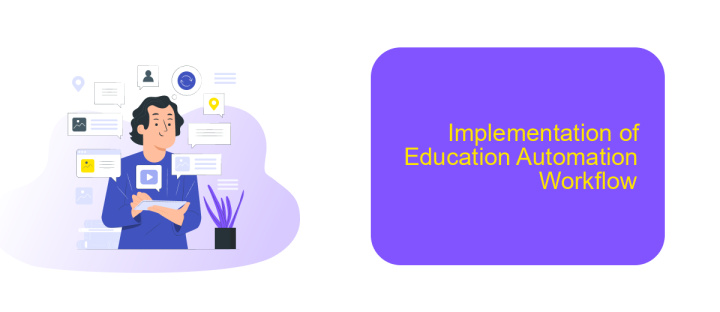Education Automation Workflow
In today's rapidly evolving educational landscape, integrating automation into workflows has become essential for enhancing efficiency and effectiveness. Education automation workflow streamlines administrative tasks, personalizes learning experiences, and optimizes resource management. This article explores the transformative impact of automation on education, highlighting key benefits, implementation strategies, and real-world examples that demonstrate its potential to revolutionize the way we teach and learn.
Introduction
In today's rapidly evolving educational landscape, automation has become a crucial component in streamlining administrative tasks, enhancing learning experiences, and improving overall efficiency. Education Automation Workflow refers to the systematic approach of integrating technology to automate various educational processes, from admissions and grading to communication and resource management.
- Automated grading systems
- Streamlined admissions processes
- Efficient communication channels
- Resource management and allocation
One of the key services facilitating these integrations is ApiX-Drive, a powerful tool that allows educational institutions to connect various applications and automate workflows seamlessly. By leveraging such services, schools and universities can ensure that their administrative and educational processes are not only efficient but also scalable, paving the way for a more innovative and effective educational environment.
Benefits of Education Automation Workflow

Implementing an education automation workflow offers numerous benefits, significantly enhancing the efficiency and effectiveness of educational processes. Automation reduces the administrative burden on educators, allowing them to focus more on teaching and student engagement. Tasks such as grading, attendance tracking, and scheduling can be streamlined, minimizing human error and saving valuable time. This leads to a more organized and productive educational environment, where resources are optimally utilized.
Additionally, integrating services like ApiX-Drive into the education automation workflow can further amplify these benefits. ApiX-Drive facilitates seamless integration between various educational tools and platforms, ensuring smooth data flow and communication. This interoperability allows for real-time updates and synchronization, enhancing the accuracy of information and decision-making processes. Ultimately, education automation workflows supported by robust integration tools lead to improved educational outcomes and a more dynamic learning experience.
Key Components of Education Automation Workflow

Education automation workflow streamlines the educational process by integrating various technological tools and platforms. Key components of this workflow are essential for achieving efficiency and improving the learning experience.
- Learning Management Systems (LMS): These platforms manage and deliver educational content, track student progress, and facilitate communication between educators and learners.
- Automated Grading Tools: These tools help in quickly assessing student submissions, providing instant feedback, and reducing the workload on educators.
- Integration Services: Tools like ApiX-Drive enable seamless integration between different educational platforms, ensuring data consistency and enhancing workflow automation.
- Communication Tools: Platforms such as email automation and chatbots streamline communication, ensuring timely updates and support for students and educators.
- Analytics and Reporting: These tools provide insights into student performance and engagement, helping educators tailor their teaching strategies.
By incorporating these key components, educational institutions can create a more efficient and effective learning environment. Integration services like ApiX-Drive play a crucial role in connecting various tools, ensuring a smooth and cohesive workflow.
Implementation of Education Automation Workflow

Implementing an education automation workflow begins with identifying the specific tasks and processes that can be automated. This involves mapping out the entire educational process, from enrollment and attendance tracking to grading and communication with students. The goal is to streamline these tasks to save time and reduce human error.
Once the tasks have been identified, the next step is to select the appropriate tools and platforms that can facilitate automation. This could include learning management systems (LMS), communication tools, and integration platforms like ApiX-Drive, which can help in connecting various educational software seamlessly.
- Identify tasks for automation
- Select suitable automation tools
- Implement integration platforms like ApiX-Drive
- Test and refine the workflow
After setting up the automation workflow, it is crucial to continuously monitor and evaluate its effectiveness. Regular feedback from educators and students can provide valuable insights into potential improvements. By adopting a flexible approach, the education automation workflow can be fine-tuned to meet evolving educational needs.
Conclusion
In conclusion, the implementation of an Education Automation Workflow has the potential to revolutionize the educational landscape. By streamlining administrative tasks, enhancing communication, and personalizing learning experiences, educational institutions can significantly improve efficiency and effectiveness. The integration of various tools and technologies, such as learning management systems and automated grading, allows educators to focus more on teaching and less on administrative burdens.
Moreover, leveraging services like ApiX-Drive can simplify the integration of different educational platforms, ensuring seamless data flow and reducing manual work. This not only saves time but also enhances the accuracy of information across systems. Ultimately, the adoption of an automated workflow in education fosters a more engaging and productive learning environment, benefiting both educators and students. As technology continues to evolve, embracing these advancements will be crucial for staying ahead in the ever-changing educational landscape.
- Automate the work of an online store or landing
- Empower through integration
- Don't spend money on programmers and integrators
- Save time by automating routine tasks
FAQ
What is Education Automation Workflow?
How can automation benefit educational institutions?
What tasks can be automated in an educational setting?
How difficult is it to implement an automation workflow in an educational institution?
What are some key considerations when choosing an automation tool for education?
Apix-Drive will help optimize business processes, save you from a lot of routine tasks and unnecessary costs for automation, attracting additional specialists. Try setting up a free test connection with ApiX-Drive and see for yourself. Now you have to think about where to invest the freed time and money!


